Accessories for interior doors. Handles, loops, locks, spinages. Materials and coatings. Models. Prices.
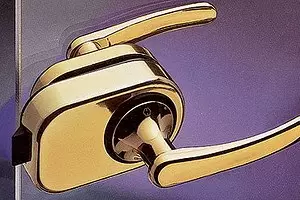
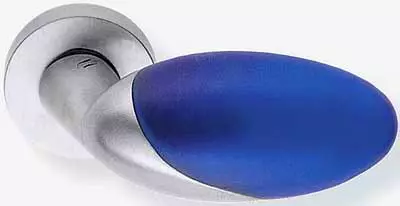
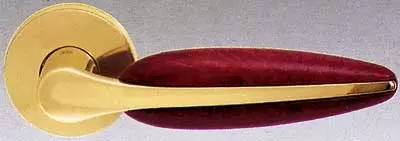
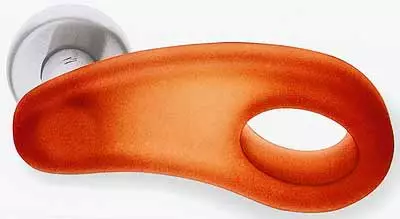
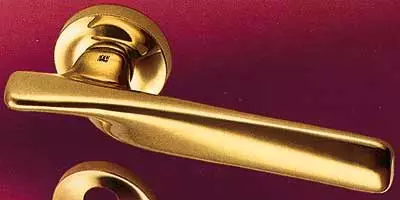
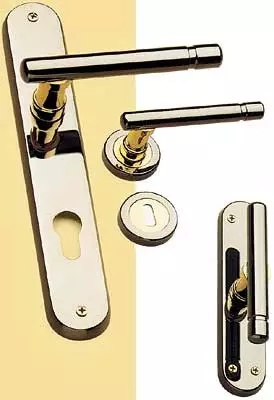
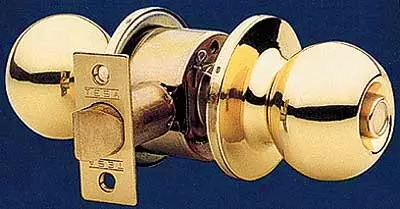
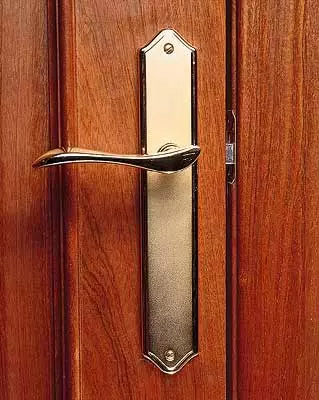
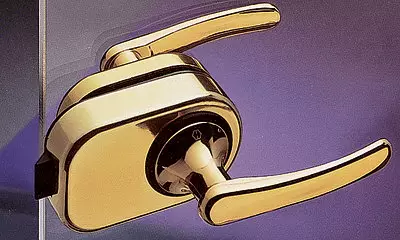
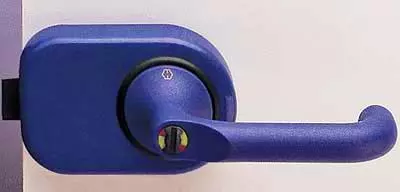
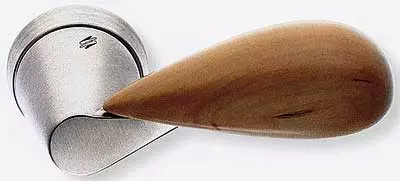
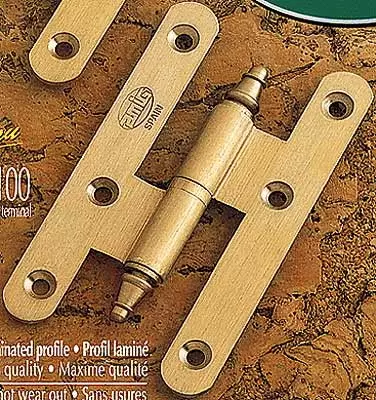
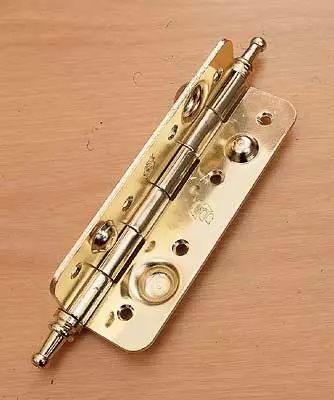
The concept of fittings for interior doors returned to Russia only ten years ago. It is probably why the appearance of the loops, pens, latches and other "small things" became the main criterion for us to evaluate. But about the operational qualities and reliability of the door fittings we simply forget. Many obviously believed that it is difficult to expect unpleasant surprises from these simple devices. But all the fittings, both cheap and expensive, has its own specifics - both in the installation, and in use. And that is not all. With incorrect selection of without offensive, the details are able to damage the expensive door.
A little about materials and coatings
The main material for the manufacture of fittings, of course, brass. Its popularity among manufacturers is based primarily on excellent anti-corrosion properties. Add to this good workability and the most important consumer quality - after polishing the product from brass glitter, precisely gold. And modern varnish coatings allow you to preserve this shine for many years. Without a protective coating, due to the oxidation of the surface layer, the brass darkens over time and loses all the former appeal.However, other materials are used in the production of door fittings: stainless steel, plastic, various zinc and aluminum-based alloys.
Surface treatment is to apply to the product (mainly by an electrolytic method) of the thin layer of metal (chrome, nickelting, gilding, and even a zirconium or rhodium coating) or in the formation of oxide film (anodizing, oxidation). In both cases, the operational qualities of the accessories are improved (for example, the Italian firm Frascio gives a lifelong warranty on its products in the inoxbrass series). The products can also be covered with polyester powder paint, which is fixed at a temperature of about 200 ° C and creates a solid and reliable film.
Handles Nobiness
Today, the desire of one of the family members is allocated from the total area of personal, hidden from the rest of the corner is perceived as completely natural. Make it allow available locks for interior doors. True, their locking properties are quite conditional. Such devices are designed to rather designate the fact itself inaccessible to other rooms, rather than prevent hacking.
Combined keyboard knobs are most often installed on intra-edible doors. For brevity, they are called the knobs (from the English. Knob - knob). It is on the nobody that accounts for 50-60% of sales of all castles and latches. Their advantages include simplicity and reliability of the mechanism, the ease of installation and, of course, affordable price. A nonsense shape of the handle (sphere, cylinder or cone) is well combined with many interior styles - from Ampira to avant-garde. Main suppliers of such castles to the Russian market - TESA (Spain), Guli (China), Nora-M (Russia) and KWICK-SET (USA; usually licensed production of Taiwan, Korea or China).
Nobies are produced in three main versions: a regular latch, latch with a lock, latch with a retainer and a simple lock. The lock, as well as the cylindrical lock mechanism, is located in the housing of the handle itself, which makes it very compact. Another constructive feature is that when you press the button (or rotate the lever), only the handle is blocked, but not the latch mechanism. In other words, you can locate the door even with blocked handles. For the opening of the slammed door from the opposite side, a small hole is provided on the handle. Through it, the latch can be removed the attached screwdriver or needle.
We have already talked about such an undoubted dignity of nobov handles as easy installation. The castle will require only two holes in the doorway and recesses for the facial strip of the latch mechanism. True, one of the holes should have a diameter of about 50 mm. Consequently, in the door equipped with such a handle, it will be difficult then to insert a lock of another type.
The Russian market presents models that combine the device latch and the classic shape of the handle. True, the lock tongue is completely removed inside only with a fairly large corner of the handle turn - about 70-80. This is due to a design feature: Initially, the mechanism was intended for a ball head, at which the turn of the hand of 80-90 is completely unnecessary. When moving to the classic form, the movement performed by hand has not become quite convenient.
Classic
When choosing Fale handles, the buyer is often limited to the inspection of their face. And notes that the goods, quite highly differ in price, externally differs quite slightly. Finding an inscription on the box (for example, Design Itali), the buyer chooses a cheaper product. Without paying attention to attention to such an important fact, as the absence on the packaging of the inscription, indicating the product-producer of goods. We advise not to hurry and look at the back side of the handle. There, sometimes you can find just amazing things. Let's say, Arabic liking on the product, issued for Italian ... to the traditional forms of fittings for interior doors, can be attributed to the Fale handles used together with a flat mortise mechanism. In our market, this kind of products are offered by Amig, Llamesan, Mandelli, Frascio, M.V., Abloy, etc., distinguish two types of faleva handles: sockets and on the plate. And those and others are installed on the door or with the help of screws, or on the screw screeds. Screws and screws at the plate are usually fixed above and below the lock mechanism, and the fasteners of the socket handles coincides with the place of its insert. Hence:- If cross-to-end screw ties are provided for attaching the handles, when buying a product, it is necessary to make sure that there are holes that match the locking holes on the socket or plastic framework on the locking holes or latch.
- When using screws, it is enough to find out whether the thickness of the door canvas will ensure the reliability of the fastening handle fastening.
For standard doors having a thickness of 40 mm and equipped with a thin (10-14 mm) locking mechanism, handles are fully suitable for mounting with screws. In other cases (for example, with a thickness of the canvas about 30 mm), it is better to use through screw ties.
A high-quality handle hole for rod perpendicular to plane plane or socket. It is desirable for the presence of a plastic bush. Only in this case, the mechanism will work gently, without distortion.
Mechanisms
In our country, latches and mechanisms of castles of the following companies are used: Finnish Abloy, Spanish AMIG and UCEM, Italian AGB, Turkish Kale, Czech Hobes and others. The average price of such products is usually $ 8-10, although it is possible to find products for both $ 1-2 and much more expensive ($ 20).
Often, the handles of some firms are equipped with the mechanisms of others. There is nothing wrong with that if the products correspond to each other for its intended purpose. Unfortunately, even in large stores for ordinary doors, sometimes offer locks intended for doors with a quarter (with a festival), and vice versa. Or the design of the handle does not provide its turn to more than 30, and the mechanism includes a latch to the latch is completely removed only when you turn to 45. Usually notice it after the mechanism and setting the handles. As a result, that the door still has opened, it is necessary to increase the gap between the doorpass and the box or deepen the response part. There are many such examples, therefore, making a purchase, pay special attention to the following factors:
one. The castle tongue must have a soft, unaccompanied course.
2. Spring of the lock must be strong enough to return to its original position not only the tongue, but also those knobs, in the design of which there is no proper returned spring.
3. The tongue must be completely removed inside the lock when turning the handle is not more than 20-30.
In addition, it is very important to inspect the locking bar of the castle in detail. For conventional doors having a horizontal section, a rectangle shape, you need a locking strap with a protrusion. It will protect the door frame from damage to the tongue of the castle. The protrusion can only reach the edge of the box (if the tongue does not concern the platband) or overlapping it and protect the platband. In the latter case, it is better that the protrusion is a little bent (all knobs are equipped with such locking straps). It is also desirable that the doors have a pressing plank. It will avoid the rattling of the door, closed on a not very precisely embedded latch.
Loop
There are two main types of loops for ordinary wooden doors: universal and classic. The latter consist of two detachable halves - left and right. Buyers often make a choice in favor of universal loops just for the reason that they are afraid to get confused, determining the direction of opening the door.Universal loops ($ 2-4) have several rubbing planes (unlike classic, where there are only two of them). Therefore, they need constant lubrication. In some cases, this drawback is eliminated by a pair of bearings. But then there are some 5-10 mm deviations from the vertical, so that the door began to spontaneously close or open. Therefore, loops with bearings are recommended to be used only with very heavy doors (more than 50 kg). Cheap universal loops have another unpleasant feature - they are gradually unscrewed, and then the lower figure nut is completely falling off. Often, the repair is not yet completed, and half of the nuts are already lost.
When buying loops, see whether there is a gap between their cards in the folded state. It is best that it is not at all or he did not exceed 1-1.5 mm. The more this clearance, the next distance from each other will be the doorbell and the box.
Brass polished loops are preferable to a coated loop, which is less resistant to mechanical damage and can still change its color under the action of chemicals. To a greater extent, this refers to a bichromated coating, to a lesser - to chromium and nickel.
At least half of the loops sold in our market amounted to the products of Spanish producers amig, MHA, Palladium and the Russian company Nora-M (price - from $ 1.5 to $ 4). The reason for the popularity of products in their successful design. These are compact and sufficiently elegant brass loops with uply thick cards (3 mm). But the most important thing is on the end of the steel finger of the loop there is a rotating chained ball. As a result, friction between the planes is significantly reduced, such mechanisms creaked very rarely.
Castles and loops for doors with a quarter (with a festival)
In the main door with the entrance, Finns and Italians produce, but there are similar models and Russian manufacturers. But if imported firms tend to supply their products with all the necessary fittings, then the buyer who chose domestic products, with this, alas, certain problems may occur. Doors of this type require special locks and latches.
Doors with a quarter differ from the usual narrower facial plank and the form of a shut-off strip. The latter in this case should not be over the edge of the box and is performed as a corner.
The possibility of emergency unlocking the door should be provided in any types and models of pens and locks that have a retainer. This necessity arises not so rarely. Stall and not cope with the "button" can be a small child, and an elderly man. Do not discount and ordinary scattered, which should not turn into a locked room for the host of a locked room. For doors with a quarter, special loops of three types are offered. Models of the first type ($ 0.5-1) are used for lightweight doors. The fact is that the threaded part of the loop can be tested in the end of the web and the box due to a significant load or inaccurate pitch, and rather - due to the combination of these two factors. For heavy doors, adjustable loops of the second type with a decorative cap ($ 5-7) or so-called broken loops (third type) with cards repeating the door profile ($ 0.5-3).
Spivenets (Rigel) for Double Doors
For double doors, special studies are needed. They are cut into the end of the door leaf at the top and below and are designed to fix one of the flaps. At the beginning of the repair boom in 1993-1994, it was used mainly by Indian costs $ 0.5-1. In these models, the mechanism was not in the general building, but only covered with a facial strap made of polished brass. When taking such a spinlet, it is necessary to make a sample of a depth of 20-25 mm in the end of the door canvase. But the main part of the doors offered in our market make up frames, having a strapping with a thickness of no more than 20-25 mm. Consequently, to install these riglels, it is essentially to cut the strapping bar, which naturally leads to a weakening of the door design. Therefore, for frame doors, it is better to use more compact models, such as the Italian company AGB, Spanish AMIG, MHA ($ 1.5-3), in which the depth of the cutting does not exceed 10-15 mm. This product, by the way, our buyers today are most popular.Prices
The quality, which means the cost of the door fittings depend on the set of factors: from the material from which it is made, manufacturing technology, type of coating. The most expensive types of coatings - gilding and matte chromium, the cheapest - painting (including bichromatization) and varnishing brass varnish. In our conditions, the place where fittings are purchased is equally important. By the way, contrary to the common opinion, in the construction markets prices for these products are far from the lowest. It is more profitable to go directly to the firm specializing in the sale of fittings. Maximum prices await you in stores selling doors. Here you pay for the selection of accessories to your doors you like, and it is understood that you get certain guarantees if the selection is not quite qualified. The cost of goods in this case may increase rather significantly - by 50-70%.
As for the cost of the handles for interior doors, in economy-class, indisputable leadership belongs, of course, Nobam. The cheapest of them ($ 4-10) is the Chinese company GULI and the Russian Nora-M (while in domestic products, the assembly from Spanish components is combined with prices close to Chinese). Somewhat more expensive ($ 5-15) are the products of the Spanish company TESA, almost those who, from the domestic market, the more expensive products of KWICK-SET ($ 15-25), but, unfortunately, displaced, in their own way, by the Chinese product.
There is a simple rule of definition of the hinge support: what hand you open the door to yourself, such loops and need. The most expensive models of the Fale handles are issued, as a rule, Italian firms, such as Colombo and Mandelli. Prices for some of their products are especially with decorative inserts from wood, glass or even aquamarine - can reach $ 130-150. Well, the author's design is always expensive. But this is still the maximum values. The main price range of Italian products is $ 30-60. In addition to the already named producers, there are still MVS and Frascio.
The average price range ($ 15-30) can be attributed to the products of Spanish companies AMIG, Llamesan, Urfic, Finnish Abloy, Portuguese Tupai and Turkish Fiore. This product is sometimes impossible to distinguish from significantly more expensive Italian models.
In conclusion, I would like to say that the variety of types and types of fittings for interior doors, presented in our market, as well as a fairly wide price range of this product (from $ 5 to $ 150), is definitely glad and optimism is pleased.
The editors thanks LLC "Elute", the company "Nora-M" and representation of the Finnish company ABLOY for help in the preparation of material.
